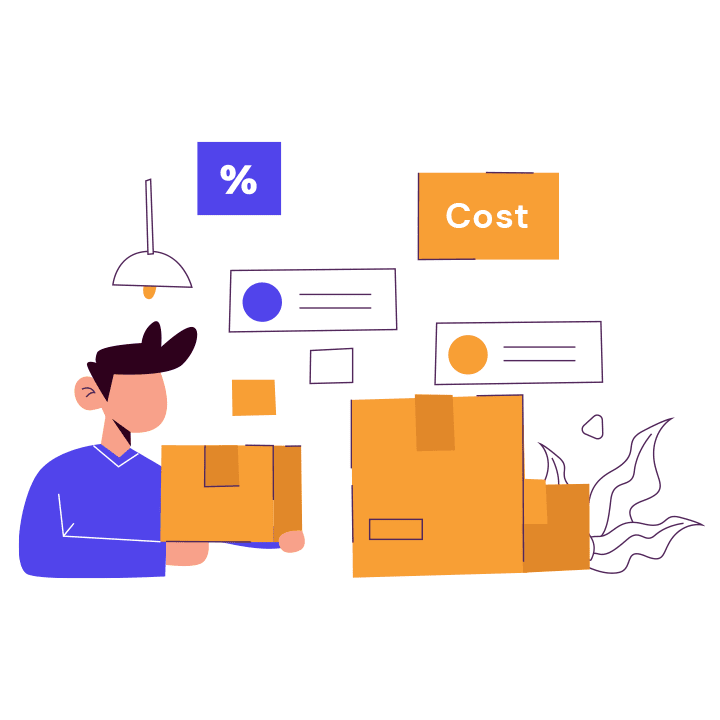How to Compute Sale Price on Products and Services

Setting the right sale price is crucial to your business’s success. Price too low, and you risk not covering your costs; price too high, and you could lose potential customers. Understanding how to compute an accurate sale price involves considering various factors, from production costs to customer acquisition strategies.
By using the right formula and taking into account key elements like variable and fixed costs, customer lifetime value, and market trends, you can ensure that your pricing strategy aligns with both your costs and market demands.
Understanding the Cost-Volume-Profit (CVP) Formula

The foundation of any effective pricing strategy is understanding your costs and how they relate to your desired profit. The Cost-Volume-Profit (CVP) formula is a powerful tool to help you calculate the sale price needed to cover costs and achieve the desired profit.
CVP Formula:
Sale Price – Variable Costs – Fixed Costs = Profit
Let’s break it down with a practical example. Imagine you manufacture baseball bats:
- Variable Costs: These are costs that change with each unit produced, such as raw materials and direct labor. In this case, let’s assume it costs $30 per bat for materials and labor.
- Fixed Costs: These are costs that stay the same regardless of how many units you produce, such as rent or administrative salaries. Let’s allocate $20 per bat for these fixed costs.
- Profit: This is the amount you want to make on each unit. For example, let’s aim for a $10 profit per bat.
Now, using the CVP formula: Sale Price – $30 (Variable Costs) – $20 (Fixed Costs) = $10 (Profit)
Solving for Sale Price, we get: Sale Price = $60
So, to cover your costs and earn a $10 profit, you should charge $60 for each baseball bat. This simple calculation ensures that your business is on track to meet its financial goals.
Factoring in Customer Acquisition Costs (CAC) and Sales Cycle
While the CVP formula helps you determine a baseline price, there are additional factors that can affect your final sale price. Two important considerations are Customer Acquisition Cost (CAC) and the sales cycle.
Customer Acquisition Cost (CAC):
Customer Acquisition Cost refers to the expenses you incur to attract a new customer, such as marketing, advertising, and sales efforts. A low CAC allows you to charge a lower sale price and still remain profitable, while a high CAC may require you to raise your prices to cover these acquisition costs. Understanding how taxes and deductions, such as those on paystubs, factor into pricing decisions could also improve your overall financial planning.
For example, if you spent $5,000 on marketing and acquired 500 new customers, your CAC would be $10 per customer. This means you’d need to account for this $10 in your pricing strategy to ensure you’re covering the cost of gaining new customers.
The Sales Cycle:
Your sales cycle refers to the time it takes to close a sale, from the initial contact to the final purchase order. Products or services with a long sales cycle, like B2B or high-ticket items, often require more marketing and sales efforts over time. These added efforts increase your costs, which should be reflected in your sale price.
For instance, a construction company that builds large-scale projects like schools might have a sales cycle that spans several months or even years. During this period, they may need to spend significant time and money building relationships and securing purchase agreements, which must be factored into their pricing to ensure they cover these costs.
Customer Lifetime Value (CLV) and Repeat Business

Another crucial element in determining your sale price is Customer Lifetime Value (CLV). CLV is a metric that measures the total revenue you can expect from a customer over the duration of their relationship with your business. Businesses that rely on repeat customers can afford to offer lower prices on individual transactions, knowing that future sales will compensate for any initial discounts.
Why CLV Matters in Pricing:
If you have a high CLV, it means that a single customer will bring in significant long-term value. For example, a customer who frequently buys from your business can help offset the costs of acquiring them and may justify offering lower prices on individual purchases.
Take the example of an auto repair shop. Once a customer finds a reliable mechanic, they may return for years for regular maintenance and repairs. This ongoing relationship allows the shop to offer a discount on a particular repair, knowing that the customer will continue to generate revenue over the long term.
Balancing CLV with Pricing Strategy:
When pricing for repeat customers, the key is to balance the immediate price with the long-term revenue. You may be able to charge a bit less for each transaction because you know the customer will keep coming back, which lowers the need to recoup all costs from a single sale.
Market Research, Psychological Pricing, and Competitor Pricing
In addition to the CVP formula, customer acquisition costs, and lifetime value, it’s essential to consider market research and psychological pricing techniques to fine-tune your pricing strategy.
Market Research:
Market research helps you understand your competitors’ pricing and how your target audience perceives value. By analyzing the prices of similar products or services in your market, you can ensure that your prices are competitive without undervaluing your offerings.
For instance, if most competitors are pricing a similar product at $50, pricing your item at $60 might price you out of the market unless your product offers added value. On the other hand, pricing too low could make customers question the quality of your product. Researching competitor pricing and customer expectations gives you a solid foundation for your own pricing decisions.
Psychological Pricing:
Another effective tool in setting a sale price is psychological pricing. This technique involves setting prices in a way that appeals to customers’ emotional responses and perceptions. For example, pricing something at $9.99 instead of $10 can make the price seem significantly lower, even though the difference is just one cent. This small trick can increase sales by making the price feel more affordable.
Other effective psychological pricing techniques include:
- Charm pricing: Setting prices that end in .99 or .95, as customers tend to perceive these prices as bargains, even when the difference is minimal.
- Price anchoring: Displaying a higher-priced product next to a lower-priced one to make the lower-priced item seem like a better deal.
- Prestige pricing: Setting prices at a round number, such as $100 or $1,000, to convey a sense of quality and exclusivity.
These small adjustments can have a large impact on customer behavior, making your pricing appear more attractive and driving sales.
Adjusting Prices and Negotiating with Vendors

To maintain profitability and competitiveness, it’s important to be flexible with your pricing strategy. Adjusting your prices over time and negotiating with vendors can help you stay aligned with market conditions and improve your bottom line.
1. Adjusting Prices Over Time –
Your pricing strategy should evolve based on changes in costs, market demand, and other external factors. Consider the following when adjusting your prices:
- Increase Prices: If production costs decrease, or demand for your product rises, you may want to raise your prices slightly. This ensures that your profit margins stay healthy.
- Lower Prices: If competition increases or customer demand slows down, reducing your prices can help you maintain your customer base and remain competitive.
- Regular Review: Periodically evaluate your prices to ensure they reflect current market conditions and your business goals. This ongoing review helps you avoid being caught off guard by market changes.
2. Negotiating with Vendors –
Negotiating with vendors is an often-overlooked strategy that can directly affect your profitability. Here’s how to make the most of vendor negotiations:
- Bulk Discounts: If you’re buying in large quantities, don’t hesitate to ask for a discount. Vendors are often willing to offer better pricing for bulk orders.
- Alternative Suppliers: Explore other suppliers to ensure you’re getting the best deal. Sometimes switching vendors or using a combination of suppliers can lower your costs.
- Long-Term Relationships: If you’ve been a loyal customer, leverage that relationship to negotiate better terms, such as lower prices or improved payment schedules.
- Discount Requests: Whenever possible, ask vendors for discounts, whether for early payments or large orders. It can save your business a significant amount over time.
By adjusting your prices and negotiating with vendors, you can keep your costs low and your pricing competitive, ensuring long-term profitability.
Setting the Right Sale Price
To set an effective sale price, it’s essential to understand your costs, market dynamics, and customer behavior. FormPros offers the tools you need to streamline your business processes, including the FormPros paystub creator, which can help manage payroll while you focus on pricing strategies. By using the Cost-Volume-Profit (CVP) formula as a foundation, factoring in Customer Acquisition Costs (CAC), and considering strategies like psychological pricing, you can find a price that balances profitability with competitiveness. Additionally, regularly adjusting your prices based on market conditions and negotiating with vendors can further optimize your pricing strategy.
When you fine-tune your pricing with these strategies, you’ll be better equipped to maximize your profits and meet customer expectations. Stay adaptable, and make sure your pricing evolves with your business.
For all your business and tax needs, FormPros is your go-to resource. Whether you need customized tax forms, contracts, or business documents, our intuitive platform helps you save time and money, so you can focus on what matters most—growing your business.
FormPros Has You Covered
Simplify your paperwork with FormPros! From making checkstubs, W-2s, and 1099-NEC forms to generating LLC Operating Agreements and even voided checks, our easy-to-use platform has you covered. Save time, reduce errors, and handle your business documents with confidence. Start now and see how FormPros makes professional form generation fast, affordable, and hassle-free!